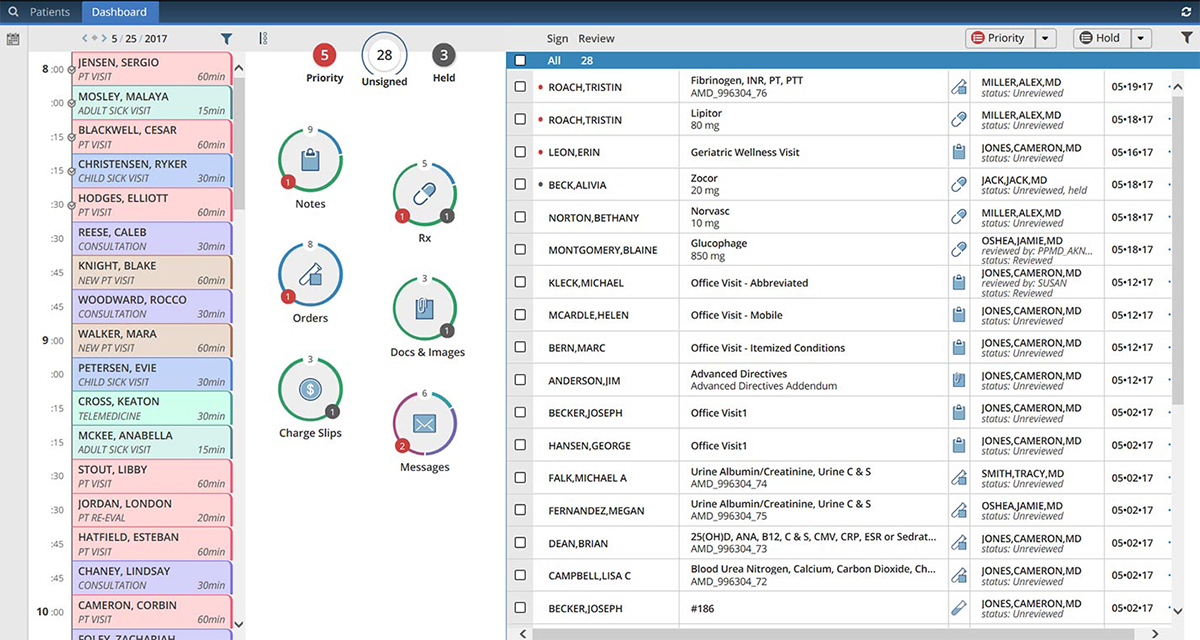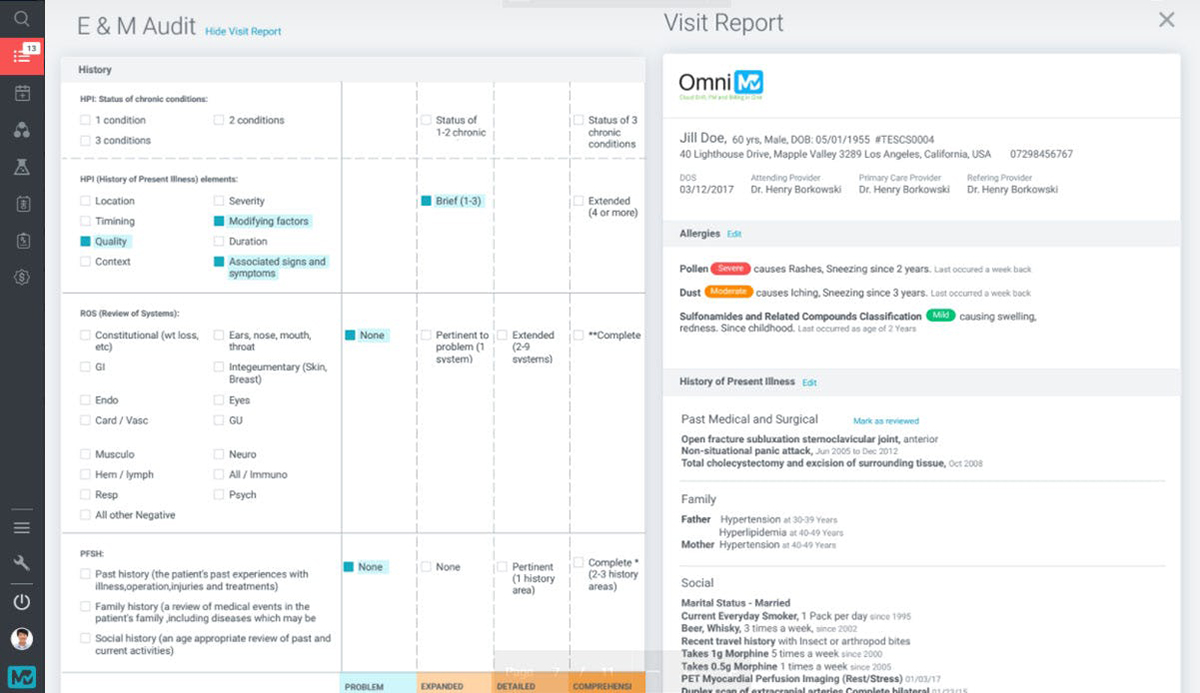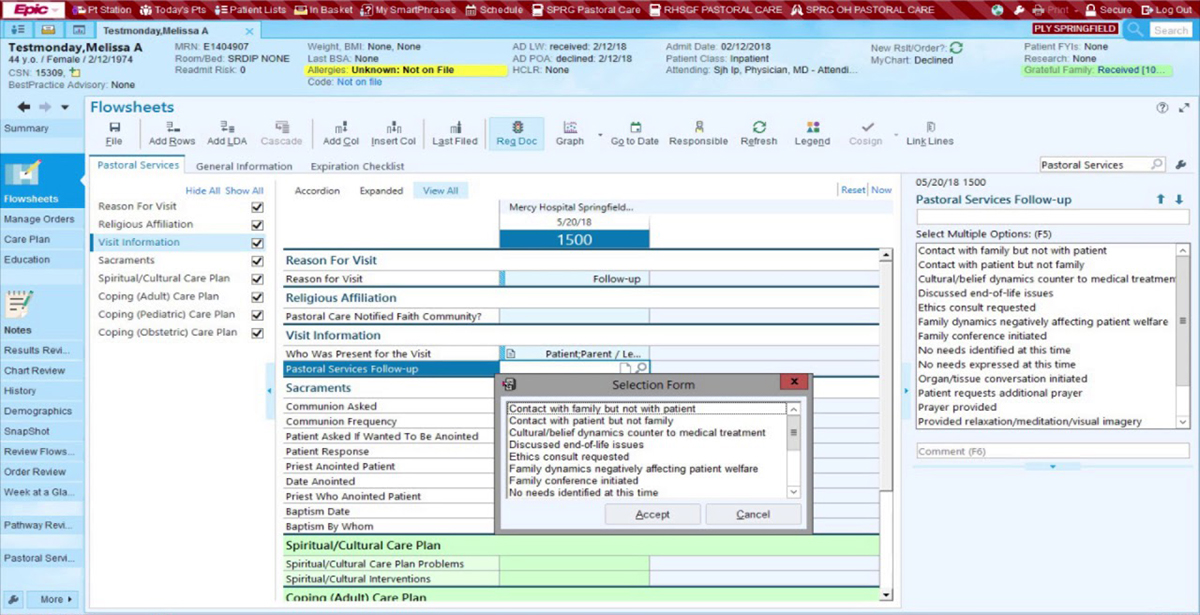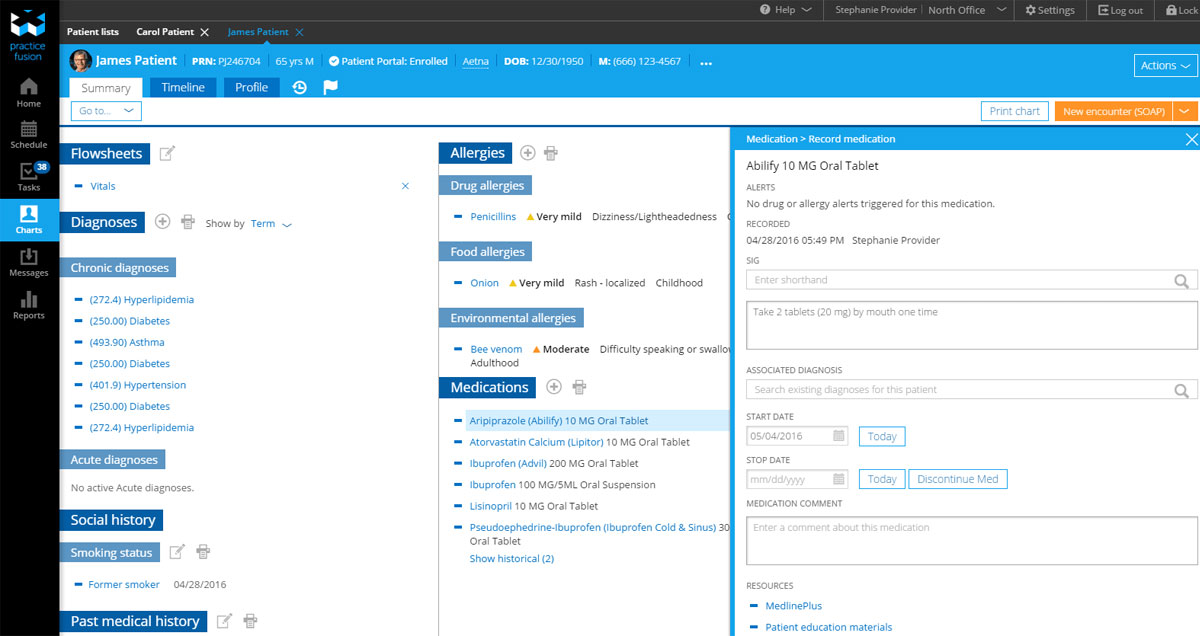As virtually all people in the world seek the services of medical systems throughout their lifetimes, it is no wonder that healthcare and medical-related technologies make for some of the biggest industries in the world. Manually working with vast numbers of patients and myriad forms of medical records is already practically impossible. The fact that 88% of physicians already use a digital form of medical record management confirms this.
As much as 36% of healthcare providers, be they private or public, see the wisdom in investing in electronic medical record (EMR) systems to dispense of required tasks that could easily overwhelm both medical practitioners and staff. Medical errors could even be fatal in the worst cases.
Digital systems are not beyond errors as long as there is still human intervention involved. Nevertheless, the way they could bring these issues to light in seconds already gives them a distinct advantage.
In this article, we’ll walk you through the workings of EMR systems so you don’t have to spend much time and resources by doing it yourself. We’ll cover both basic and advanced capabilities and all the other things to help you pick the best EMR solution for your practice.
What Is an EMR System?
An electronic medical record system is the digital equivalent of the paper chart that keeps a patient’s history of medical diagnoses, allergies, immunizations, and the prescriptions they have taken or are taking. Clinicians necessarily consult these records each time patients are in for a checkup. The pertinent records inform physicians of the next step to take.
The whole system allows clinicians to be in control of their practice and the steps required to continue treatment. In the service of a large number of patients, the system goes where manual processes simply cannot.
Nevertheless, EMR systems are from being perfect. They still need to address a few issues, which we will discuss in detail in the section “Potential Issues of EMR Systems.”

Here’s one of the leading EMR systems, AdvancedMD EHR, with a modern-looking dashboard
List of Best EMR Systems
There are tens of capable EMR systems that you will find in the market. We selected a few outstanding ones for your evaluation.
- AdvancedMD EHR. With its electronic health record, patient scheduling, and billing system, AdvancedMD EHR ensures that all key information remains. It allows clinicians to automate their workflows for maintaining accurate records while providing seamless transfer of relevant data. It offers e-prescription, telemedicine, and e-faxing—convenient when patients have to see another specialist. There are no specific pricing plans for AdvancedMD EHR: you have to contact the vendor for a quote.
- EpicCare EMR. Best for large medical institutions, EpicCare EMR features workflow design and an interface that is easy to work with, allowing it to meet the needs of these organizations in a short time. It packs a revenue cycle management system to take of productivity matters, along with the functionalities expected of such a system for sophisticated healthcare facilities: payment gateways, billing, and invoicing. Interested institutions have to contact the software developer for a quote.
- Nextech EMR. This cloud-based, fully capable EMR system offers e-prescription, patient scheduling, and billing, apart from its able revenue management tool. Nextech EMR helps clinicians to speed up charting, which they can also customize as they see fit. This lets them attend to more patients than they normally would without it. For pricing, you have to contact the vendor for a quote.
- SoftClinic. A hospital management tool and EHR system in one, SoftClinic bundles patient registration, admission, operation, discharge among others in a powerful application suite. It handles images and videos with a modern patient record system. The vendor encourages interested healthcare practitioners to get in touch for a customized quote.
- OmniMD. EHR solution OmniMD EMR integrates practice management, billing, and patient documentation into one powerful platform. It best serves ambulatory outpatient clinics and other practices that are suited for chronic care management. The application package is quote-based, allowing practitioners to build their systems and practices as they see fit.
- MicroMD. A cloud-based, configurable EMR and practice management platform. Trusted by over 14,000 physicians from more than 2,700 practices, MicroMD offers a reliable EMR solution to empower providers to address the various regulatory and payment platform requirements. This is a quote-based solution.
- Centricity EMR. This is the EMR of choice for providers of ambulatory practices. Highly customizable and usable, Centricity offers a wide range of features to help level up any medical practice, including e-Prescribing, MACRA / MIPS, discrete data reporting, EPCS, etc. It has a base monthly rate of $559 per provider.
- PracticeFusion. This is a cloud-based, easy-to-use EMR that helps health providers to remain relevant in a constantly evolving medical environment. It also helps streamline and organize patient care using robust features like flexible billing, integrated policy support, etc. Pricing starts at $99.00 a month per user.
- CureMD. This is an award-winning, industry-certified, and specialty-driven EMR platform. Recognized for its affordability, CureMD enables healthcare providers to design a custom-built platform meeting their unique needs in electronic medical records software.
- Hippocrate. A leading big data health solution, Hippocrate empowers clinical providers to better engage their patients, collaborate with colleagues, and discover better treatment strategies using data-driven patient analytics. Hippocrate is free for solo practice. Paid plans start at $10 per user per month, for 2 to 15 doctors.

Checking a patient’s medical record is easier with OmniMD EMR
Main Features of EMR System
What factors should you consider when you compare and browse for software of this type?
The key selling points of an EMR system consist of digital features that distinguish them markedly from their manual counterparts. These features are culled from long years of wisdom from physicians and clinicians who certainly have the most important things to say about what an EMR system should have. The crucial features must include:
- Systems integration and easy-to-use interface. An EMR system must integrate a hospital information system (HIS) and a billing system. HIS integration applies to practitioners who are connected with larger medical institutions. A billing system eliminates the need for manual fee calculations and collection, while an easy-to-use interface determines the usability of the whole software package. In a similar vein, comprehensive hospital management system are becoming increasingly crucial in streamlining various administrative and clinical workflows, enhancing the overall efficiency of healthcare facilities.
- Scheduling and appointment functions. The bread and butter of any medical practitioner is the reliability of appointments in the records. A capable EMR system should at least integrate with scheduling and appointment systems, email programs, and the like to allow for the timely sending of notifications to patients.
- Medication tracking. It is one of the most powerful features of an EMR system. Instead of digging through unordered sheets of paper, the doctor simply clicks a button and summons the list of medications previously prescribed to the patient. With the quick availability of information, the physician can determine the effectiveness of the medications and discover allergic reactions and prevent them from occurring again.
- Digital prescription. Physicians are notoriously known for cryptic prescriptions. The advent of EMR systems capable of digital prescriptions eliminates this type of handwriting issue, allowing both patients and pharmacists to conclude transactions seamlessly.
- Document scanning. Medical practices are typically deluged with paper trails to support proper documentation. With an EMR system supporting document scanning, paper trails become digital records that can be processed conveniently and forwarded to recipients easily.
- Marketing insights. An advanced EMR system can provide practitioners with a wealth of performance reports and insights that you can leverage to your advantage. Some of them allow you to benchmark your practice against competitions in your immediate area, allowing you to separate yourself from the pack and market effectively.

In EMR system EpicCare, medical details of the patient are accessible as never possible before.
Benefits of EMR System
An electronic medical record system confers apparent advantages that are absent in manual processes. These benefits include:
- Cost reduction. The immediate impact of an EMR system is felt from the reduced expenses on paperwork, manpower cost, reliability, and elimination of the need for multiple testing.
- Quick access. With all patient records in the form of digital storage, clinicians need to turn on their system, search the patient’s name, and pull out relevant information in no time. The stored data is also bound to be up-to-date and complete, unlike in manual medical records.
- Efficient documentation and billing. Once all paper records are transferred via document scanning, the practitioner need not worry about wayward medical records, easier information entry, and faster billing.
- Better and more efficient care. By spending less time on looking and ascertaining patient records, physicians can dedicate more time engaging with the patient, look up better diagnosis and medical approach, and apply those to the current patient.
- Secure information. There is nothing like all pertinent patient information going in one place and not scattered about, ensuring that no information leaks that can be detrimental to the patient will occur.
- Easy sharing of information. Physicians often have to collaborate with colleagues about a certain patient’s case. In the past, providing carbon copies to colleagues could be a challenge in themselves. With digital records, this is effectively eliminated. This is more the case if colleagues are working under the same larger organization and using the same and, thus, compatible EMR system.
- Fewer errors. Inaccuracies in medical records can translate to errors in medication and prescription. With a more reliable system, there is less chance of mistakes on both ends.
- Improved productivity. Medical errors can cost a good night’s sleep or more as it can send you to the liability courts too. With less strain on the workspace, physicians can see better productivity and improvements in other areas of life.
- Improved patient-physician relationship. With better diagnosis, medication, and less time in the clinic, physicians, and patients can develop more enjoyable relationships within the clinic.
- Allow practitioners to set and meet business goals. With mundane but essential tasks and operations out of the way, clinicians can set their sights on improving and growing their businesses as they see fit.

Richer details, fewer errors—one of the best benefits of EMR systems.
Latest Trends in EMR Systems
No industry or discipline is immune to the relentless march of technology, and EMR systems are no exception. What developments on the horizon and beyond beckon to alter the way these systems are meant to function? Let’s examine some of them.
- Machine learning + EMR to uncover dementia. AI and machine learning are already used to dig into past astronomical surveys to uncover previously missed discoveries. In EMR systems, data in the form of diagnoses and prescriptions prove to be crucial when fed into machine learning algorithms: they allow the algorithms to identify those who are at risk of developing Alzheimer’s and other related forms of dementia. The project led by scientists from Regenstrief Institute, Indiana University, gives hope that a similar approach may be used for other kinds of illnesses.
- Interoperability and data portability. The recent initiatives of the US government, MyHealthData, and Patients Over Paperwork seek to finally address the glaring issue of interoperability of EMR technologies. The government is aggressively pursuing these initiatives, even pushing for fines to be meted out for noncompliance. While EMR technologies are notorious for systems not working with each other, it’s a result of these applications starting life as mostly billing systems that added clinical components later on as the market needs arose.
- Standardization. When physicians individually request for one feature to be added or removed from their EMR systems, it says a lot about how current EMR systems still need to work on standardizing features to meet the needs of practitioners from various fields. There’s also the need to specify the screen views for physicians and billing workers: giving the same screen views for both could spell disaster for the practice and the patients themselves.
Potential Issues of EMR Systems
- Prohibitive application cost. With EMR systems costing hundreds to thousands of dollars, it’s easy to see why these systems are too restrictive for small practices to purchase or invest in. Only large practices or hospitals can really afford them.
- Clunky software designs. As most EMR systems saw first light as billing systems and only added medical modules much, later on, it’s no wonder that some physicians express frustration at how they have to get through multiple operations to get to the functionality that they need.
- Inadequate search capabilities. Some EMR systems are poorly designed for search operations that physicians wonder if they were any better than previous physical records. Developers have to address this issue if clinicians were to be finally free of clerical works that leave them less time to engage with their patients.
- Interoperability. As mentioned in the previous section, interoperability remains one of the most significant drawbacks of EMR systems. While the more advanced applications have addressed this issue through the use of patient portals, many other vendors are not as quick to do the same. In any case, this is still not the optimal solution. As long as one EMR system fails to work seamlessly with another, it’s a hurdle that will test the patience of both patients and clinicians. It’s one issue that should factor heavily when you compare and shop around for a software of this type.
Found your ideal EMR system yet?
There it is, our presentation of what an EMR system is, along with the benefits that you stand to gain by investing in one. When you are ready to do so, you can refer to the features listed here to gauge which one of these systems fits the bill.
We have also listed a few examples of an EMR system. You may investigate the applications further to see how far they meet your unique requirements. Along this line, you might want to try their free trial when it is offered. By doing so, you get a firsthand feel of how the system actually works and if it is the one for you.
